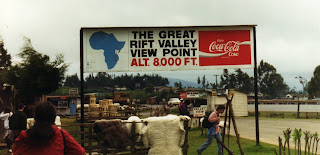
I have always been obsessed with foul weather. Being a born and raised New Englander must have something to do with it. I love terms like 'it blew a gale' and 'a nor'easter's moving in'. My old roommate, Dave, and I used to spend hours glued to the Weather Channel during a big hurricane. He's a middle school science teacher and just as obsessed with weather as I am. Their extreme weather correspondent
Jim Cantore is our HERO. We loved to watch him put himself in the center of the storm, holding on to a sign post or palm tree, his snazzy custom L.L. Bean gear being practically blown off him.
The other day my coworkers and I were talking about all the weddings we have this season and it made me reflect on my own wedding. I was married in Gloucester, MA on October 28th, 2006, the weekend of 15th anniversary of the
Perfect Storm. It was fitting weekend. A film crew from the Weather Channel, including our fearless Jim Cantore, was already in town giving live updates from the
Crow's Nest, the infamous fisherman bar on the waterfront featured in the blockbuster movie.
A week before the wedding I said to my mother, "there's going to be weather that day." "Don't be ridiculous", she said, "It will be fine". I had envisioned photos on
Good Harbor Beach, our favorite surfing spot, cocktails on the deck of the
Tavern where the reception was to take place, a beautiful sunset reflected on the water.
Two days before the wedding the forecast called for rain. The night before the wedding the seagulls moved inshore. I switched on the Weather Channel from the B+B and there was Jim, telling me that the barometer could actually fall LOWER than the day of the Perfect Storm. Oh my God, my guests!
Had it not been my wedding weekend I would have been in weather-heaven, I might have even driven down to my old apartment in Arlington to watch the action with Dave. But I had 156 people coming into town the next morning.
Around 2 AM the wind picked up, lashing the shutters and keeping me awake. I turned on the Weather Channel from the sitting room. And there was Jim outside the Crow's Nest taped earlier that night. You could see him getting excited about the impending doom.
The next morning I looked out the window and across the street to the reception hall, there was the Weather Channel's van broadcasting from the parking lot of where 156 of my closest friends and family were supposed to be eating and dancing to our favorite Latin Band,
Manguito, in about 10 hours!
Two hours later my hair dresser of 7 years, John from
Fringe Salon in Salem, comes up the stairs into the suite. The first words out of his mouth are, "Well, if ANYONE should get married today it should be YOU." He knows I'm a science geek, and he was right, it was fitting. I actually felt better.

During the four hours my bridesmaids and I spent getting ready we watched endless waves come over the sea wall, hit our cars, hit the famous
fisherman statue on the water front....it was so ugly, Jim all the time on the TV in the background getting more and more excited.
At some point I spoke with Dave who said he actually emailed Jim Cantore somehow through the Weather Channel's website to invite him and his crew to the wedding. How thoughtful of him!

In the end, no one will forget our wedding. In the end Jim didn't make it to the reception, he did send Dave a signed photograph a few weeks later with his apologies. Dave has it framed in his classroom. And the next morning when my new husband and I opened the blinds to an amazingly sunny day there was Jim and his film crew

filming right in front of our B+B where a sailboat had beached during the reception. So we ran outside and met him. And he was the nicest guy I ever met, he congratulated us and posed for a few pictures.
So happy wedding season, happy hurricane season. I hope the weather is interesting where you are and if it rains on your wedding day (or even better, if you have a full blown nor'easter) then you will be blessed with the most luck anyone could have. My husband and I couldn't be happier.
 In conclusion I've decided to stick with the Seventh Generation since they were a pioneer in the recycled and earth friendly paper product business. I like their sense of community and their idea of corporate consciousness.
In conclusion I've decided to stick with the Seventh Generation since they were a pioneer in the recycled and earth friendly paper product business. I like their sense of community and their idea of corporate consciousness.




































